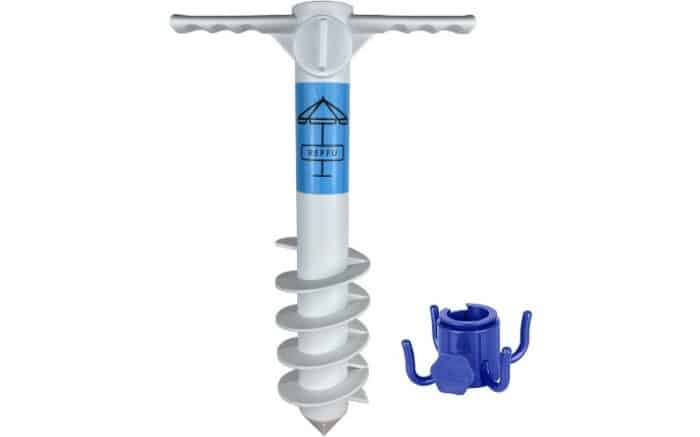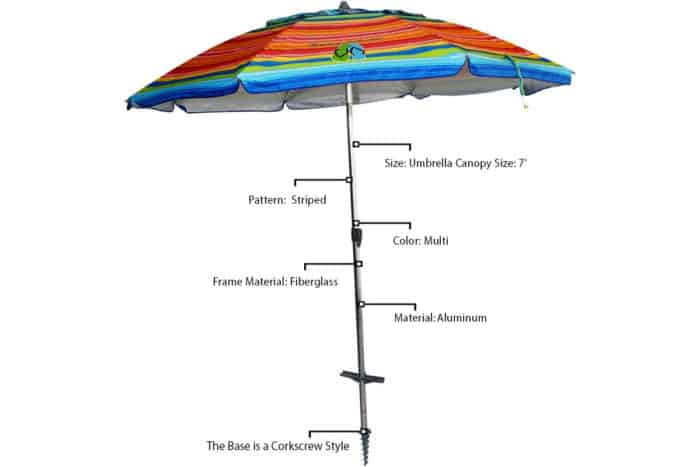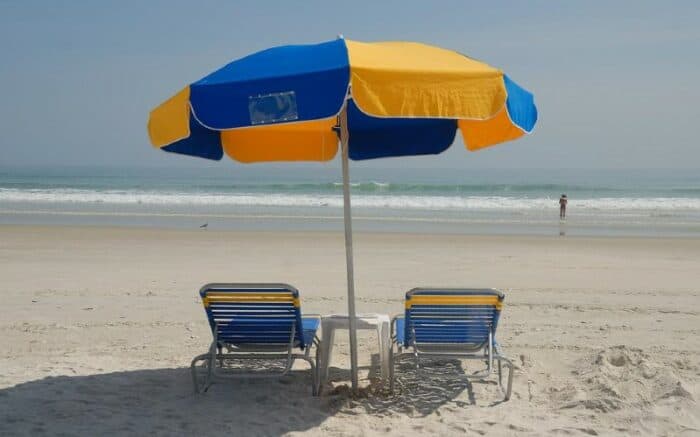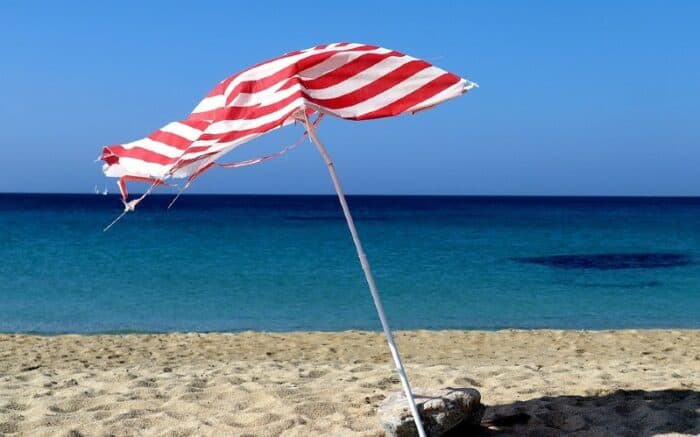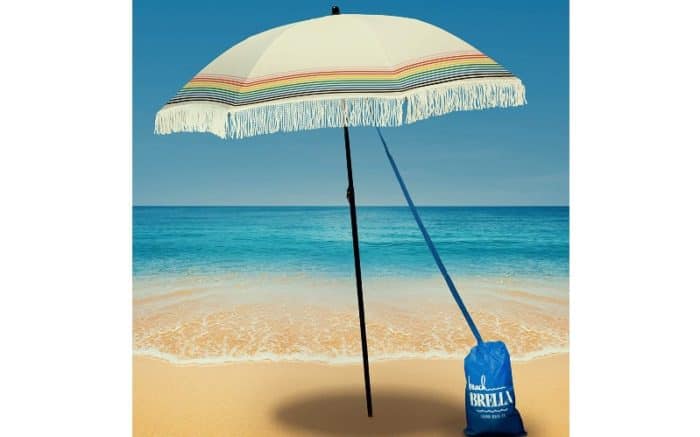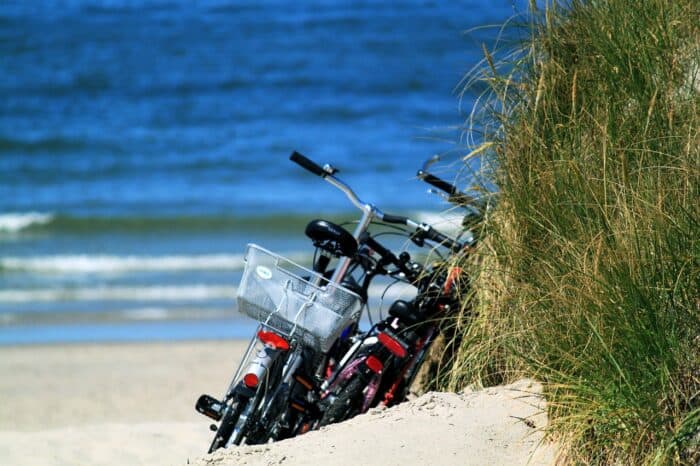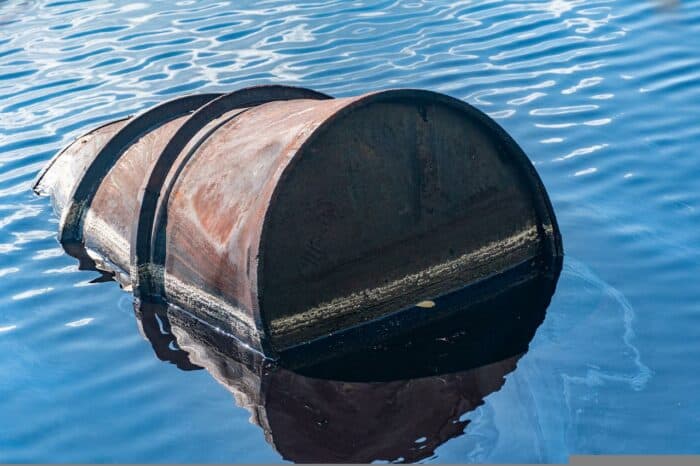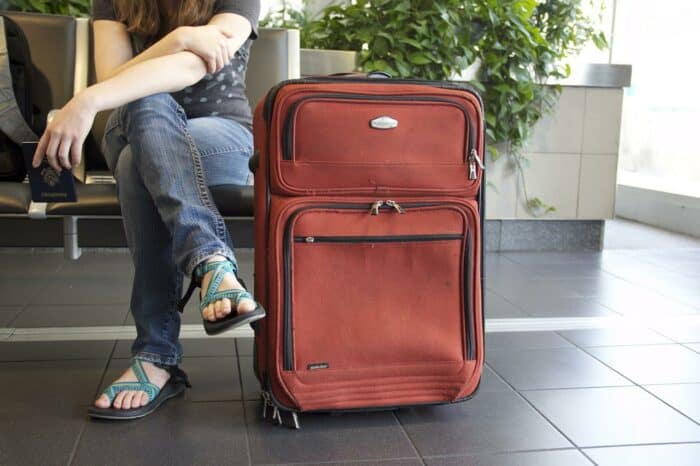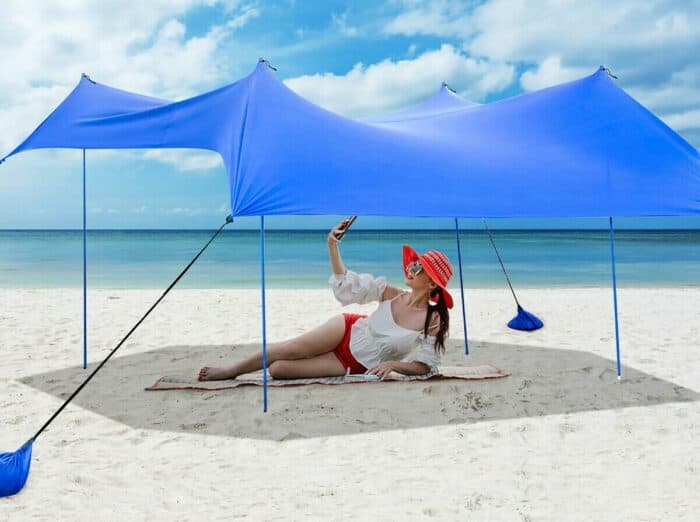How to Keep a Beach Umbrella From Blowing Away
There’s a lot of fun to be had on any given trip to the beach. Whether you’re heading out to swim, to fish, to boat, or have a barbecue, you need to make sure you bring the right gear. Most of us remember beach chairs and a cooler, but what about shade? Sunscreen is a great way to protect your skin from a burn, but sometimes you want a place to get out of the glare and cool down, if only a little bit. A beach umbrella can offer sun protection on a hot day with one problem – the wind.
Wind and umbrellas are like oil and water, they just don’t mix. Luckily there are a few tricks you can use to secure beach umbrellas and keep your umbrella from blowing away.
Beach Umbrella Anchors
A great way to ensure a stronger grip is an anchor and this can take a few forms. Beach umbrella anchors work by digging into the soil. A properly installed beach umbrella with an umbrella anchor can stay secure no matter the wind direction.
One of the best kinds of anchors is the screw kind. Basically this turns the base of your umbrella pole into a large screw. With the canopy closed, you just twist your umbrella into the sand which allows you to sidestep the whole wiggling part of the plan here. The threaded end adds a lot of grip and support providing you go deep enough into that firm sand.
Keep in mind, if you add a screw anchor tip to an umbrella pole, the pole itself has to be tough. If you have a very thin pole or one made of weak materials, you could end up causing the pole itself to just bend or break in a strong enough wind. So you’d have the tip anchored really well, but the umbrella itself would fail you and that’s not what you want.
There are a lot of different sand anchors on the market. Some are expensive, some are not. Some are plastic, some are aluminum or other metals. But they do come with ratings that you should be aware of. The strength of the anchor is based on how much wind it is rated to resist. The American Lifeguard Association recommends you only use sand anchors that are rated to handle wind speed of at least 35 miles per hour. Luckily, many of the most popular anchors are rated to handle 50 miles per hour or more. But make sure you see what the rating is before investing in one. If you can’t find it listed in the product details, you might want to consider looking at a different brand.
To put that into perspective, if the wind force was about 20 miles per hour or more, you’d probably be considering leaving already anyway as there would be a lot of blowing sand and things like towels and the odd beach chair would be flying around as well.
Why an Anchor is Important
Believe it or not, some beaches have begun to fine beachgoers who lose control of their umbrellas. These things can be very dangerous to beach neighbors if they get loose and people have been seriously injured by the poles. Remember, on most umbrellas, the tip of the pole is pretty much like a spear with the sharp pointy bits and that’s exactly how it acts in strong winds. It’s a dangerous weapon in heavy winds. Now imagine a beach full of people and an umbrella pulls loose faster than anyone can react. The danger is real.
Which Kind of Anchor is Best?
So I mentioned you can get a plastic anchor or a metal anchor. Both have some upsides and some downsides you’ll want to consider.
Plastic anchors, and by that I mean ABS plastic or something similar, are usually pretty tough and lightweight. They can also handle exposure to wet sand without problem. A potential downside is that, over time, you can wear those threads down a bit which makes it harder to dig into the sand. If they hit rocks and such you may chip the plastic as well.
Another risk for plastic is if it’s too cheaply made. If the company didn’t use high grade ABS you could get something that breaks easily.
On the other hand you have metal. Usually this is aluminum but stainless steel is not unheard of. These are usually really tough but there is a potential risk for corrosion. Also they can be heavier to carry around in a bag of beach gear.
Pay attention to how your umbrella pole fits into a beach anchor. Some beach umbrella poles are actually too big, and the anchor won’t fit, so check your sizing. This is especially true of patio umbrellas. A patio umbrella is no substitute for a good beach umbrella. The other thing to watch is how the pole is secured. Some use some more complicated pressure devices to snugly hold the pole into the anchor. But many use a simple thumb screw design. So the pole is inserted and then a tiny screw on the ide of the anchor is tightened to provide pressure and hold the anchor in place. If these are not high quality they can come loose, defeating the purpose of using an anchor in the first place.
The Benefit of Wiggling Beach Umbrellas
If you don’t have an anchor, then there are some other ways to ensure a better grip in the sand to prevent your umbrella flying away. In my opinion a sand anchor is absolutely key to ensure beach umbrella safety. But these are good secondary measures and, to be honest, they work with an anchor too if you want added security.
Sand is a tough medium to work in. It’s loose and unreliable and offers very little security for setting up things like beach tents and umbrellas. That’s why you need to get a little creative. You can just jam an umbrella pole into the sand, but it will probably fall over even without a strong wind if that’s all you do. But if you wiggle it, now you’re on to something.
The first several inches of beach sand are the driest and loosest. Because sand is light but also not dense to hold things firmly. It will stop the beach pole from going very deep and offer no support at the same time. I recommend just clearing this out of the way. Use a shovel if you have it or just your hands and scoop and push that dry, useless sand out of the way for now. Get down to the more firmly packed stuff. Now you can plant the pole in it.
If you wiggle the umbrella pole into the sand, you’re driving it down into more firmly packed, denser sand below. At the same time you’re increasing the volume of sand pushing in all around the pole. Think of it like holding a chopstick in your hand. If you just hold it with your thumb and forefinger circled around it, you won’t have a tight grip. But if all of your fingers encircle it, you can hold on much more firmly. You need as much of the pole’s surface area held snugly by sand on all sides to ensure a stronger grip, and that means wiggling it in so it goes deeper.
Try rocking it back and forth as much as 45 degrees in one direction than the other, really open up a hole. You should be looking to get the base of your umbrella into the sand at least 18 inches, but 24 inches is even better.
Once you have it down far enough, start packing the sand back in. Fill the gap made by wiggling the pole first, and use your feet to pack it densely around the pole. Then you can bring in all the dry sand you moved and pile it up around the base for added support.
Angle Your Umbrella Pole
This one is pretty self-explanatory and maybe it’s just really obvious. Or it should be, anyway. But sometimes we can forget the simplest things. This is especially true if you’re in the moment trying to hold onto an umbrella as a strong gust is pulling it from your hands.
When you can do so, make sure you wiggle that umbrella pole on an angle that has the wind blowing down on it and not against in or under it. If the wind is hitting it on the top because it’s at a slight angle, it will actually help strengthen its hold in the sand, which is good for you.
You can’t do this at too great an angle, of course, as the shade an umbrella provides doesn’t work so well at a very sharp angle. But if you offset it just enough, maybe no more than at a 70 degree angle, that could definitely be enough to ensure the wind isn’t pulling the umbrella up and out of the sand.
Keep in mind that the wind is pretty unpredictable. If it’s blowing in from the east it will likely stay coming from that direction, but over time it can definitely shift. You may get surprise gusts from any direction that can quickly upset your umbrella and cause you to start all over again. That’s why it’s good to rely on some of these other methods along with the angling trick.
What About Tilting the Umbrella?
Some umbrella poles have a feature which lets you keep the pole straight up and down on a 90 degree angle but lets you tilt the canopy. This isn’t really ideal. Because the pole is still at 90 degrees, when you tilt the canopy into the wind, the force of that wind all gets pushed onto the pole. You’re just as likely to knock it over as a result, even if the canopy is tilted into the wind.
When it comes to the tilt function, I’d only recommend that to adjust to the moving position of the sun, not the wind.
Sandbag Anchors
Not to be mistaken with sand anchors, a sandbag anchor goes around the base of an umbrella pole. You can buy these at stores and find them online or you can make your own. It works on the same principle that any sandbag works on – you’re using the weight to shore up support. Many sandbag anchors are simple bags with a hole in the center. You can plant the pole through the hole and affix it in the ground. Then fill the bag with sand from the beach to add support. When full, these can create a pretty dense and firm bag that holds your umbrella pole tightly.
Another style involves bags that are fixed to your pole with mooring lines. So you fill the bag with sand and then attach the bag by a kind of guy wire to the pole. If the wind picks up, the guy wire prevents it from flying away.
Sandbag anchors are pretty easily made if you’re in a pinch as you really just need any kind of bag. You can fill them with sand and stack them around the base of your umbrella then empty them before you leave. It’s a decent, low-cost solution that can help stabilize any umbrella. I definitely recommend using this method in conjunction with a proper sand anchor, however.
The Bottom Line
For a lot of people, a beach umbrella is an essential item for any beach visit. Depending on what beach you go to, you could be facing a fine if you’re not able to keep your umbrella secure. For that reason you definitely want to make sure you have a reliable sand anchor to keep your umbrella in place. And it wouldn’t hurt to try a few other tips just to make sure the umbrella stays where you want it. That way you’re still having a good time and don’t have to worry about any potential injuries. As always, stay safe and have fun.
Categories: Beach
